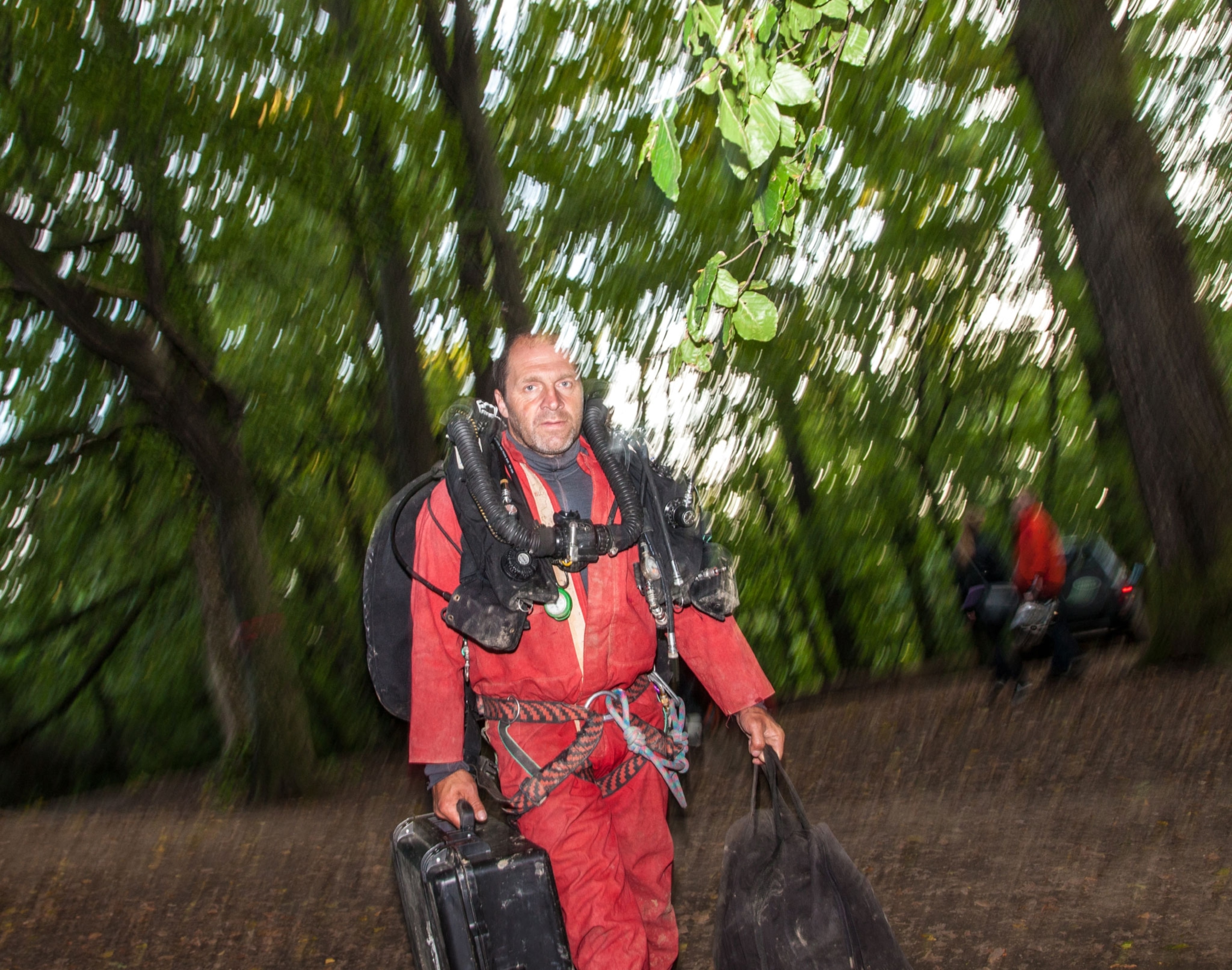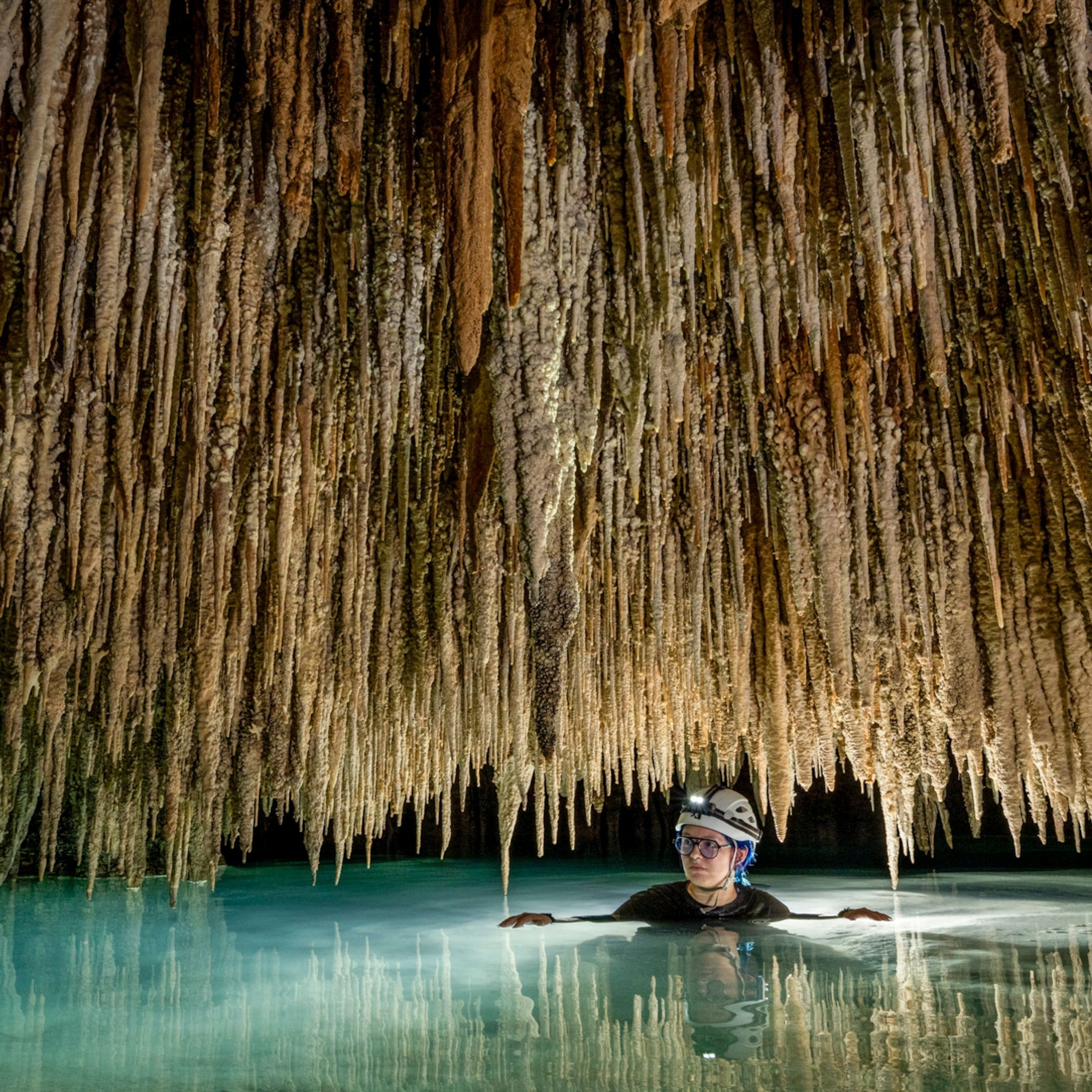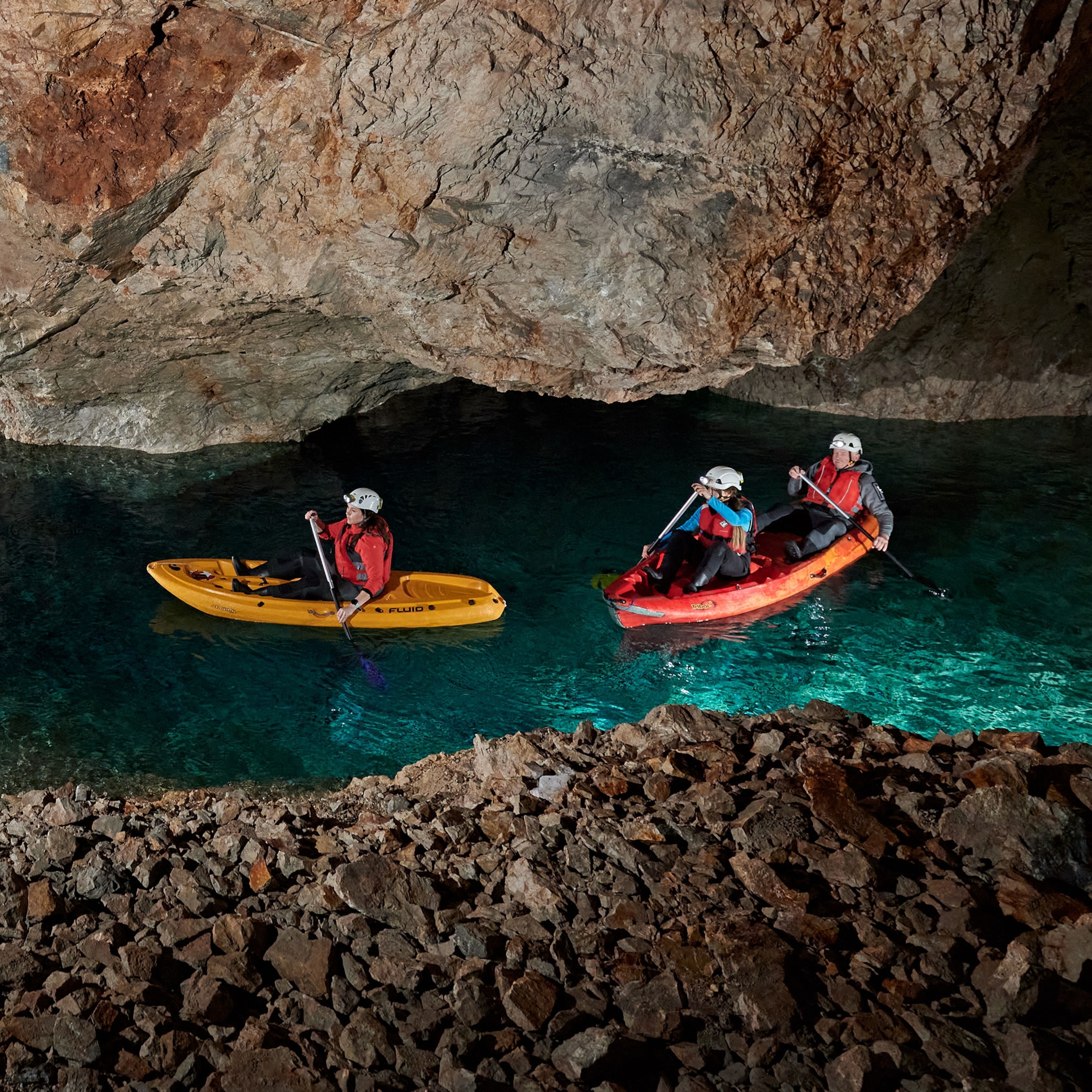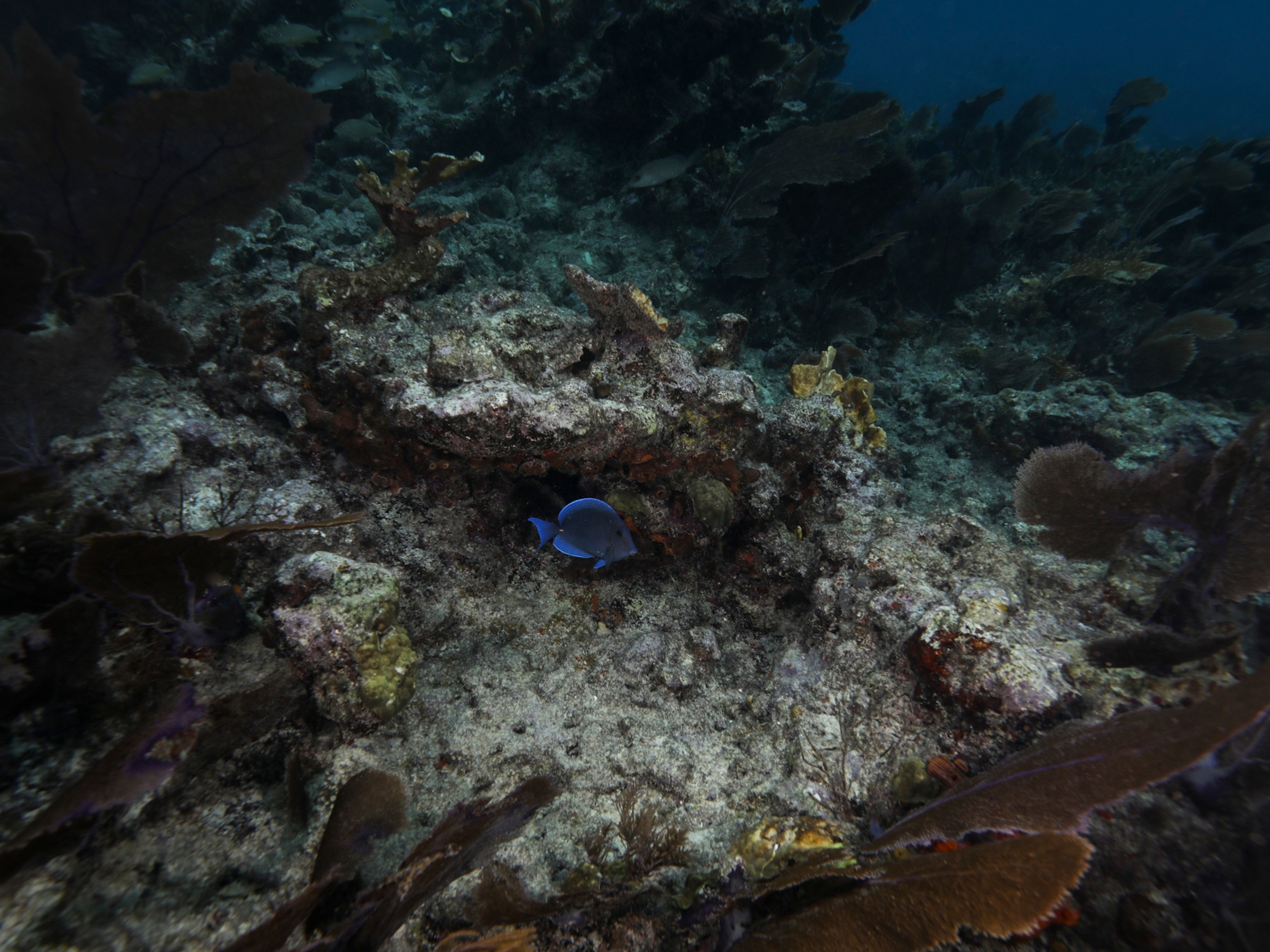Have These Divers Found the World's Deepest Underwater Cave?
Polish diver describes dangers and allure of extreme cave diving.
Explorers in the Czech Republic may soon announce a new record for the world’s deepest underwater cave. Since July a team of cave divers from Poland has been probing the contours of Hranická Propast, located in eastern Czech Republic, currently acknowledged as the world’s second-deepest flooded cave. The team is sponsored in part by National Geographic and is led by Krzysztof Starnawski, 47, who holds the record for the deepest dive with a closed circuit rebreather—928 feet (283 meters)—which he set off the coast of Egypt in 2011.
Starnawski has been exploring Hranická Propast since 1999, and last year, after reaching what he thought was the bottom, 656 feet down (200 meters), he managed to push past a tiny gap called a “squeeze passage” where he discovered another deep shaft. He lowered a line which reached 1,260 feet (384 meters) before running out of cord—only 26 feet (8 meters) short of Italy’s Pozzo del Merro cave, which currently holds the title of world’s deepest underwater cave.
In early July Starnawski descended with a longer cable in hopes of making a new, deeper measurement, but since his last dive there in February, the squeeze passage had collapsed and fallen into the second shaft. The squeeze passage had become an open gallery, but when he lowered the cable into the second shaft, it touched down at 1,214 feet (370 meters), likely having landed on the debris from the cave-in.
The team took a break when a member of their team was lost in diving accident in the Baltic Sea, but Starnawski has not given up and recently returned to the cave. On August 21st he descended to a depth of 869 feet (265 meters) to look for new passages to launch the probe. In the coming weeks he hopes to finally prove what he has long suspected: that Hranicka Propast is the deepest underwater cave system on earth.
Speaking via Skype, Starnawski recently checked in from the team's base near the cave to discuss the challenges of this expedition and extreme diving.
I heard that your expedition was postponed when a diver from your team, Maciej Wielowski, went missing while exploring a deep shipwreck in the Baltic Sea. What happened?
Maciej was a friend, a student, and one of the support divers on the Hranická Propast project. A search and rescue team did not find his body, so his family asked me to go look for him. We searched for three days but couldn’t find him. Probably he is somewhere deep inside the wreck. After I looked for him, the Polish Navy tried to find him but still nothing. The conditions in the Baltic Sea are complicated. I will continue looking for my friend whenever I can and the weather is good.
What is it about Hranická Propast that makes you think it may be the deepest flooded cave in the world?
This cave is very unique because it’s like a volcano, formed from hot mineral water bubbling from the bottom up, rather than rain coming from the top down like most caves. There are probably only three caves like this in the world. There is nothing typical about this cave, and every dive we make new discoveries.
How does one verify a record like this?
We have replaced the original lead line with a special electronic probe that consists of a 656-foot (200 meter) cable with pressure sensors on its end. Before the dive the probe was checked and verified by the Polish Institute of Measures.
Your world record dive was 928 feet (283 meters). What is stopping you from going to 1,000 or 1,200 feet (300-360 meters)?
It is a problem with rebreathing carbon dioxide. Nobody knows when you must stop because there aren't many people who dive deep. Dave Shaw set the previous record in 2005. Two days later he repeated the same dive and he died. The footage from the camera he wore shows his hands starting to shake uncontrollably. He breathed too much CO2 and lost control.
What is High Pressure Neurological Syndrome (HPNS)?

HPNS is another problem that occurs when you reach about 500 feet (150 meters) below the surface. The pressure from the water is actually squeezing the axons in your brain (nerve fibers that conduct impulses to other cells). It starts with tremors and can lead to tunnel vision and a total loss of coordination. The deeper you go, the worse it gets. If you cross the border the problems will be too big and you will die.
Diving at these depths puts huge pressure on your body. How do you decompress?
If I spend three or four minutes at the bottom, I need six to seven hours to decompress. If I tried to go straight to the surface, my blood would boil, and I’d be dead in five minutes. The first decompression stop is around 425 feet (130 meters) where I meet a support diver who has extra air in case I have a problem. At 30 feet (10 meters) I enter a habitat. It’s like a glass turned upside down. The majority of the decompression takes place in the habitat, so I’m in there for several hours. It is very boring, but they bring me food, water, and magazines. Unfortunately, because the water in the cave is saturated with CO2, the air in the habitat is poisonous and I still have to use the rebreather.
If it is so dangerous, why do you do it?
I am exploring the unknown, pushing into territory where no one knows what the limits are, so I have to figure everything out on my own and even design and build my own equipment. It’s all very interesting and exciting for me.
What’s next?
This cave is a big part of my life because I have been exploring it for 15 years, and it keeps going deeper. I want to show people that this is the deepest underwater cave. If I succeed, I will be fulfilled for a few minutes…then I will need to find a new project.
Mark Synnott is a writer and expedition guide based in New Hampshire. Follow him on Instagram.







